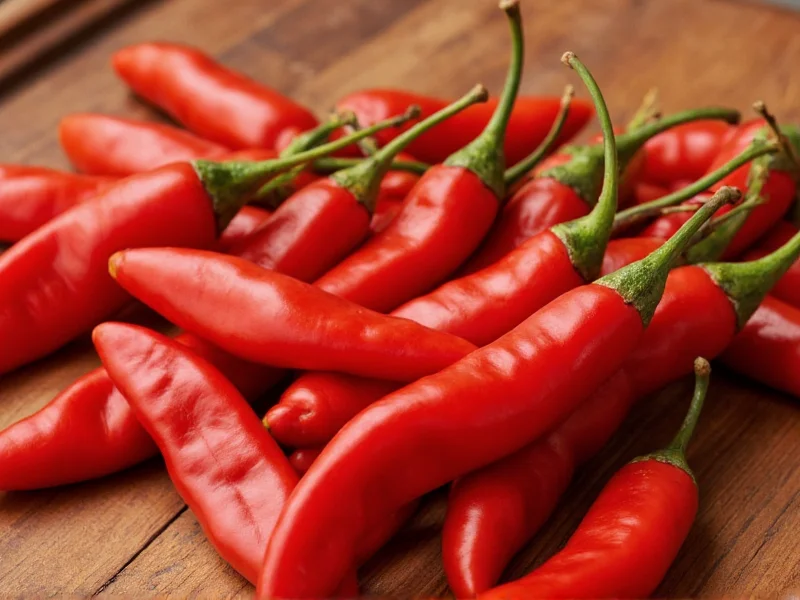When your chili turns out too spicy, don't panic. You have several practical options to reduce the heat while preserving flavor. Understanding how to fix overly spicy chili requires knowing why certain ingredients counteract spiciness. Capsaicin, the compound that makes chili peppers hot, is oil-soluble and binds to receptors in your mouth. The right ingredients can neutralize or dilute this compound effectively.
Why Chili Becomes Too Spicy
Chili often becomes too spicy due to miscalculating pepper quantities, using unexpectedly hot varieties, or adding concentrated spice forms like cayenne powder. Even experienced cooks can accidentally create extremely spicy chili that needs fixing. The good news is that multiple science-backed methods exist to naturally reduce spiciness in chili without compromising your entire batch.
Top 7 Methods to Make Chili Less Spicy
1. Add Dairy Products
Dairy contains casein, a protein that breaks down capsaicin molecules. This is why milk helps after eating spicy food. For chili:
- Add 1/4 cup of sour cream, yogurt, or whole milk per serving
- Stir in gradually while heating gently (don't boil after adding dairy)
- Full-fat dairy works better than low-fat options
This method works best for how to tone down heat in chili without changing flavor significantly, though it adds slight creaminess.
2. Incorporate Acidic Ingredients
Acids help neutralize the pH balance affected by capsaicin. Effective options include:
- Fresh lime or lemon juice (start with 1 tablespoon per serving)
- Vinegar (apple cider works well with chili)
- Tomato paste or additional tomatoes
Acidic ingredients provide a natural way to make chili milder while enhancing other flavors. Add gradually and taste as you go.
3. Increase Non-Spicy Components
Dilution is one of the most reliable quick solutions for too spicy chili. Add more of your non-spicy ingredients:
- Beans (kidney, black, or pinto)
- Tomatoes or tomato sauce
- Vegetables like bell peppers or corn
- Broth or stock
For best results, increase your recipe base by 25-50% rather than just adding liquid, which can water down flavor.
| Method | How Much to Add | Time to Simmer | Best For |
|---|---|---|---|
| Dairy (sour cream/yogurt) | 1/4 cup per serving | 5-10 minutes | Creamy chili varieties |
| Acid (lime juice/vinegar) | 1 tbsp per serving | 5 minutes | Tomato-based chili |
| Sweetener (sugar/honey) | 1 tsp per serving | 10 minutes | All chili types |
| Dilution (beans/tomatoes) | 25-50% more base | 15-20 minutes | Most chili recipes |
4. Use Sweeteners
Sugar counteracts spiciness by balancing flavor profiles. Effective options:
- White sugar (start with 1 teaspoon per serving)
- Honey or maple syrup (adds complementary flavor)
- Shredded carrots (adds natural sweetness while cooking)
Sweeteners work particularly well for fixing spicy chili without dairy for those with dietary restrictions.
5. Add Starchy Ingredients
Starches absorb some of the capsaicin oil. Consider:
- Cornmeal or masa harina (1-2 tablespoons)
- Crushed crackers or tortilla chips
- Extra cooked rice when serving
This method provides a simple solution to reduce chili spiciness while thickening your chili.
6. Incorporate Fats
Since capsaicin is oil-soluble, additional fats can help distribute the heat:
- Avocado (when serving)
- Extra olive oil or butter
- Nuts like cashews (blended in)
Fats work well for how to make chili less hot immediately without altering flavor significantly.
7. Let It Rest
Sometimes the simplest solution is time. Let your chili:
- Cool completely and refrigerate overnight
- Reheat gently the next day
- Taste and adjust if needed
This allows flavors to mellow and integrate, often reducing perceived spiciness by 20-30%.
What Not to Do When Fixing Spicy Chili
Avoid these common mistakes when trying to reduce spiciness in chili:
- Don't add excessive water (dilutes flavor)
- Avoid doubling spices to "balance" heat (makes it spicier)
- Don't use alcohol (can intensify heat)
- Don't add more hot ingredients thinking they'll counteract
Preventing Overly Spicy Chili in the Future
The best approach to making chili less spicy is prevention:
- Add spices gradually, tasting as you go
- Remove seeds and membranes from fresh peppers (where most capsaicin resides)
- Use mild pepper varieties like ancho instead of habanero
- Keep a dairy product nearby when cooking for quick fixes
When to Start Over
If your chili is extremely spicy despite multiple correction attempts, sometimes starting fresh is better than compromising flavor. However, most cases of overly spicy chili can be fixed with the right approach.











 浙公网安备
33010002000092号
浙公网安备
33010002000092号 浙B2-20120091-4
浙B2-20120091-4